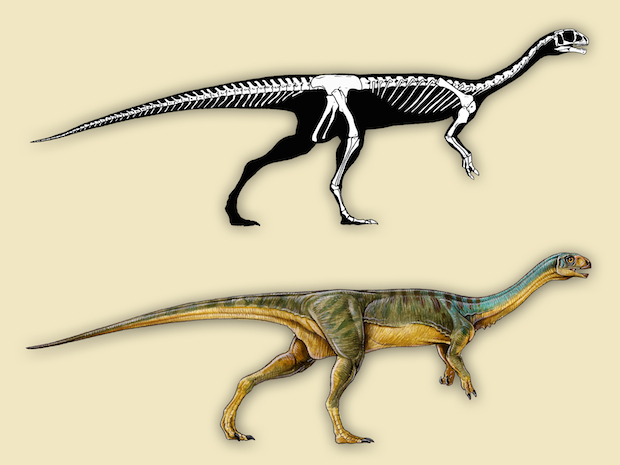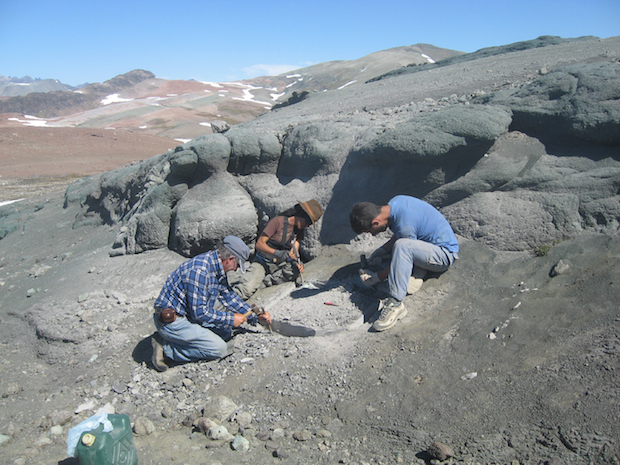"Bizarre" T. rex relative was long-necked vegetarian
Fossils of a dinosaur discovered in Chile would fit nicely alongside Tyrannosaurus and Velociraptor except for one thing - this one was a vegetarian.
Fernando Novas and his colleagues discovered the primitive theropod in southern Chile. The 9-foot-long, plant eater thrived around 150 million years ago and had features typical of several different dinosaur groups, including teeth the shape of leaves, short arms, a small head, but a long neck.
The new dinosaur described in the journal Nature on Monday was named Chilesaurus diegosuarezi, in reference to Chile and to honor Diego Suárez, who at the age of seven, found the first bone remains in the area known as the Toqui Formation, located in southern Chile.
"It's so bizarre, so unique in its features that it's difficult to place Chilesaurus diegosuarezi in the phylogenetic tree of the theropod dinosaur," Novas, the chief of the comparative anatomy laboratory at the Bernardino Rivadavia Natural Sciences Museum in Argentina, told CBS News. "In our analysis, we faced a problem because the animal exhibited so many different features along the skeleton."
Theropod dinosaurs were the dominant predators in most terrestrial ecosystems during the Mesozoic era. For the most part, they were carnivores. There were some that developed a taste for greens but, until now, that was seen more recently with close relatives of birds in Asia.
"This animal not only appears earlier in time but is the first one from the southern hemisphere," Novas said. "Chilesaurus diegosuarezi represents another lineage of therapods and indicates that (the transition) from meat eating to plant eating occurred many times during the therapod evolution."
Initially, Novas and his colleagues assumed the hundreds of bones found at the site came from many different dinosaurs. But when they discovered a dozen full skeletons about the size of turkeys, their thinking changed.
"When we went to the field in 2010, we collected entire skeletons," Novas said. "I was able to recognize that each of the bones, in fact, belonged to a single dinosaur. The skeleton was something like a Rosetta Stone that allowed us to resolved this."
Novas was able to determine this was a plant eater by the fact that its hands had two blunt fingers, unlike the sharp claws of predators like Velociraptor. Chilesaurus' pelvic girdle also resembles that of the ornithischian dinosaurs, a sign that it likely had a large intestines needed to digest plant material.
But why would one dinosaur have so many features?
Martín Ezcurra, a co-author on the study and a researcher with the University of Birmingham's School of Geography, said Chilesaurus likely evolved traits of different dinosaurs because it had to adapt to similar ecosystems or environmental conditions - a process called mosaic convergent evolution.
"Chilesaurus provides a good example of how evolution works in deep time and it is one of the most interesting cases of convergent evolution documented in the history of life," Ezcurra said.
"Chilesaurus shows how much data is still completely unknown about the early diversification of major dinosaur groups," he continued. "This study will force paleontologists to take more care in the future in the identification of fragmentary or isolated dinosaur bones."
Novas said he plans to return to the bone-rich site to get a more complete picture of Chilesaurus and the world in which it lived, including why there aren't other close relatives present in Patagonia and which dinosaurs preyed on it. So far, the researchers have found bones of prehistoric crocodiles at the site and a large, plant-eating dinosaur closely related to diplodocus-like sauropods.



